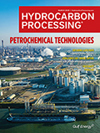Distillation
Japan's Eneos shuts crude distillation unit at Sakai oil refinery
Japan's biggest oil refiner, Eneos Corp, shut the 141,000 bpd crude distillation unit at its Sakai refinery on Oct. 16 after a glitch.
Pemex shuts large CDU at Deer Park, Texas (U.S.) refinery
Pemex shut down the 270,000 barrel-per-day crude distillation unit at its Deer Park, Texas, refinery on Monday because a process line ruptured.
Singapore middle distillates stocks drop after 3 weeks amid strong jet fuel exports
Singapore's middle distillates stocks fell for the first time in three weeks, tracking robust net exports of jet fuel/kerosene though a dip in net exports of gasoil limited overall draws
Singapore's middle distillates stocks near 2-year high on lower gasoil net exports
Singapore's middle distillates stockpiles hovered around a two-year high, tracking declines in net gasoil exports, though a rise in jet fuel/kerosene net exports slowed down the overall inventory pile up.
Implement innovative corrosion management solutions for biofuel refining—Part 2
The production of carbon-neutral and renewable transportation fuels is growing rapidly, driven by the need to find feedstocks beyond fossil resources. Environmental, social and governance (ESG) initiatives—along with accelerated consumer demand for sustainable and carbon-negative fuel products—are also driving demand.
Energy comparison for heat pump and bottom flashing schemes for C3 hydrocarbon system
Propane-propylene splitters are present in significant numbers across petrochemical complex units, such as ethylene crackers and propane dehydrogenation units.
Business Trends: Converting refineries to renewable fuels is no simple switch
Petroleum refineries around the globe are under pressure.
Refineries’ pandemic turmoil—KNPC’s gasoline demand: Opportunities and challenges
The COVID-19 pandemic is regarded as one of the most exceedingly difficult challenges faced in the oil and gas industry's history.
Reliable vacuum distillation requires reliable ejector system performance
A fuels-oriented crude oil refinery must have good performance from its vacuum distillation section to deliver targeted yield and throughput.
Implement innovative corrosion management solutions for biofuel refining—Part 1
The production of carbon-neutral and renewable transportation fuels is growing rapidly, driven by the need to find feedstocks beyond fossil resources.

- China's Wanhua Chemical starts operation at new east China cracker 4/4
- Brookfield Infrastructure announces the acquisition of Colonial Enterprises for $9 B 4/4
- PBF restarts some units at Martinez refinery after February fire; fire-damaged units remain shut 4/4
- Japan to curb gasoline prices from June to cushion U.S. tariff blow 4/4
- Evonik presents innovative "Debonding on Demand" concept for more sustainable bonding 4/3
- Oil, gas and refined product imports exempted from Trump’s sweeping tariffs 4/3




